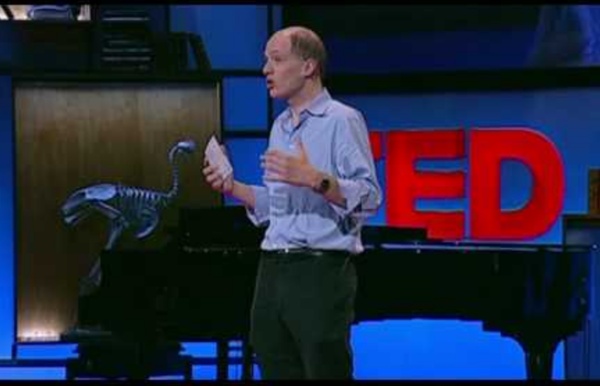



http://www.youtube.com/watch?v=MtSE4rglxbY
Nanorobotics Nanorobotics is the emerging technology field creating machines or robots whose components are at or close to the scale of a nanometer (10−9 meters).[1][2][3] More specifically, nanorobotics refers to the nanotechnology engineering discipline of designing and building nanorobots, with devices ranging in size from 0.1–10 micrometers and constructed of nanoscale or molecular components.[4][5] The names nanobots, nanoids, nanites, nanomachines or nanomites have also been used to describe these devices currently under research and development.[6][7] Nanomachines are largely in the research-and-development phase,[8] but some primitive molecular machines and nanomotors have been tested. An example is a sensor having a switch approximately 1.5 nanometers across, capable of counting specific molecules in a chemical sample.
Mary Roach: 10 things you didn't know about orgasm Ken Rinaldo; Autopoiesis is a group consciousness of interactive robotic sculptures - robotic art Autopoiesis, is a robotic sculpture installation commissioned by the Kiasma Museum in Helsinki, Finland as part of Outoaly, the Alien Intelligence Exhibition curated by Erkki Huhtamo, 2000. It consists of fifteen robotic sound sculptures that interact with the public and modify their behaviors over time. These behaviors change based on feedback from infrared sensors, the presence of the participant/viewers in the exhibition and the communication between each separate sculpture. This series of robotic sculptures talk with each other through a computer network and audible telephone tones, which are a musical language for the group. Autopoiesis is "self making", a characteristic of all living systems which was defined and refined by Francisco Varella and Humberto Maturana. The interactivity engages the viewer/participant who in turn, effects the system's evolution and emergence.
Peter Singer: The why and how of effective altruism Resources : Autopoiesis There exists a large body of work by two Chilean biologists, Humberto Maturana and Francisco J. Varela, usually referred to collectively as Autopoietic theory. At the heart of this work lies the description of a process, called 'Autopoiesis'.